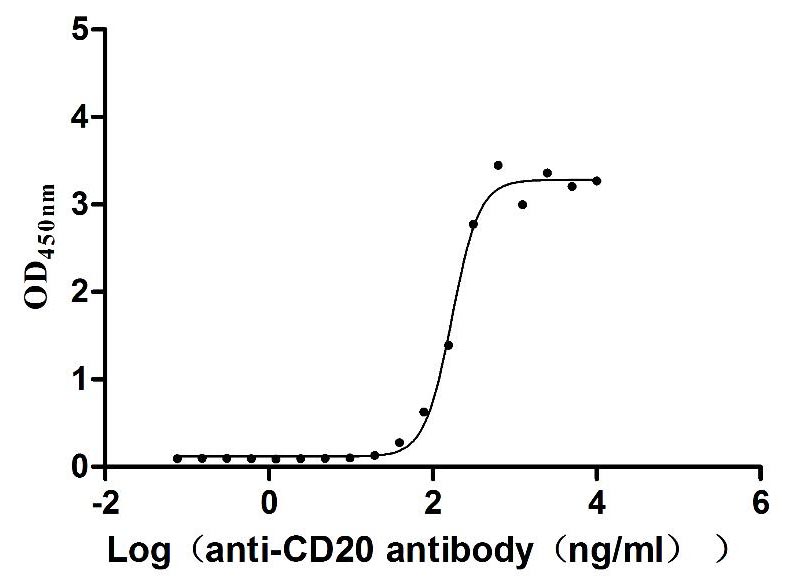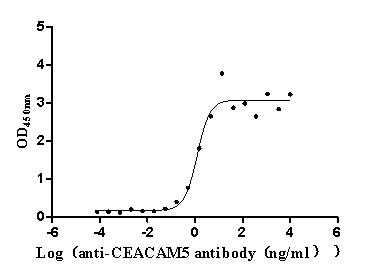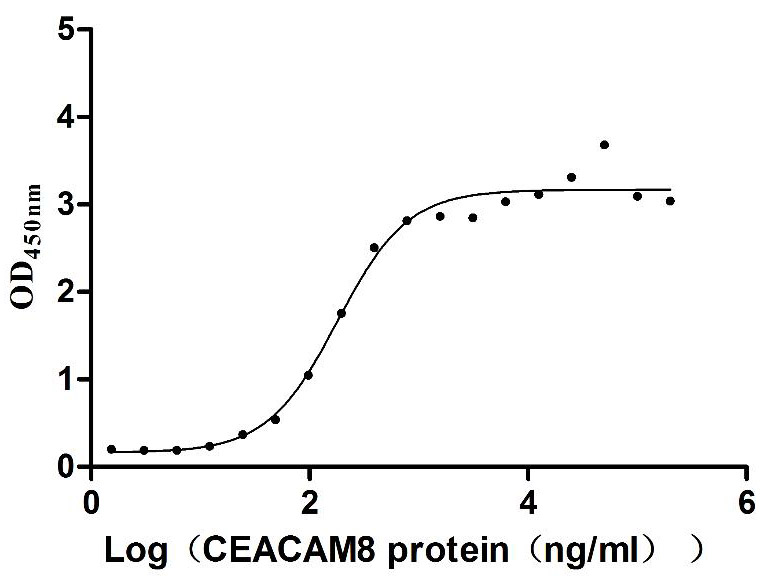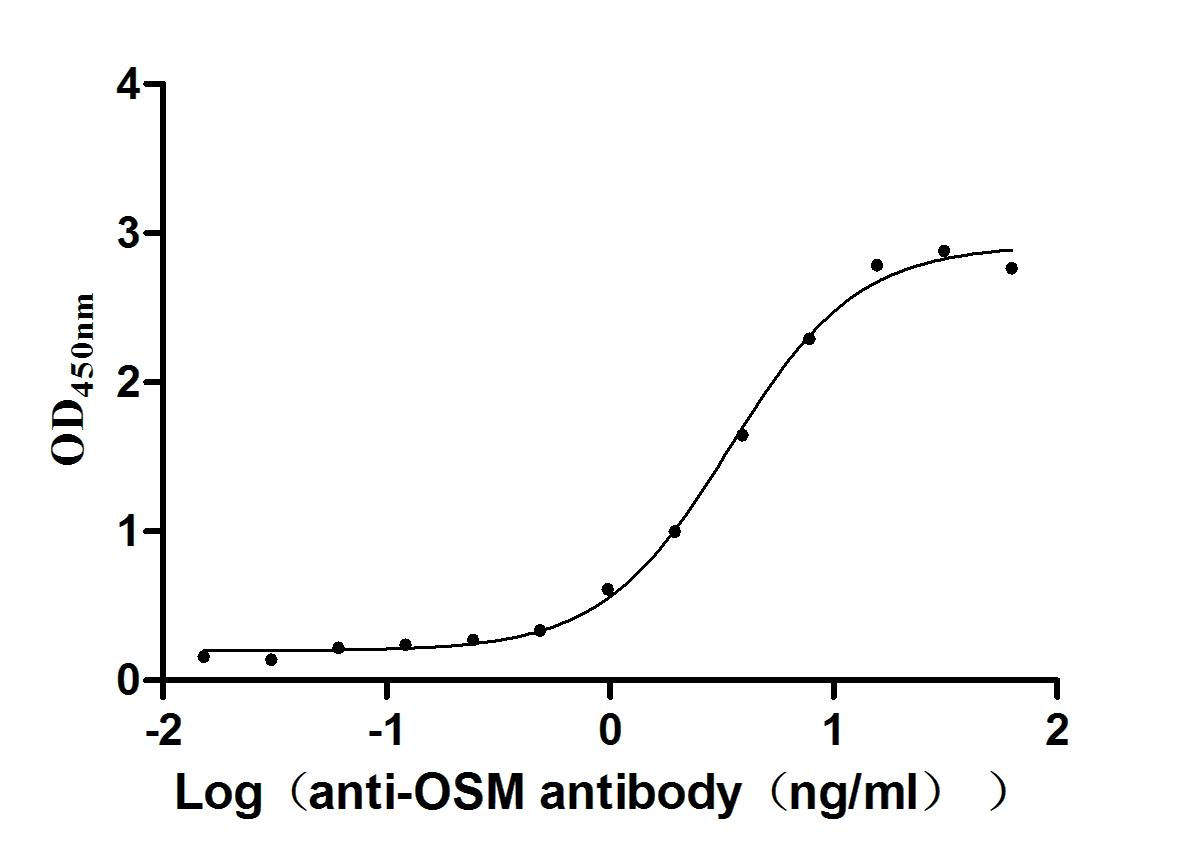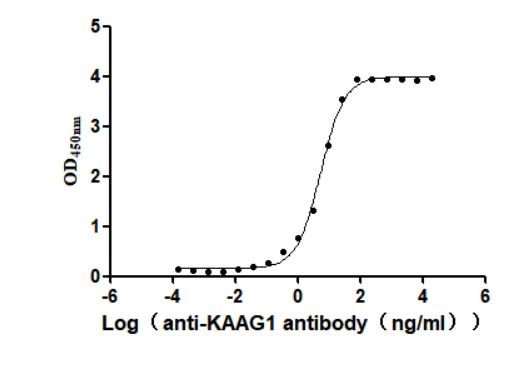Recombinant Human 15-hydroxyprostaglandin dehydrogenase [NAD (+)] (HPGD)
-
中文名称:人HPGD重组蛋白
-
货号:CSB-YP010702HU
-
规格:
-
来源:Yeast
-
其他:
-
中文名称:人HPGD重组蛋白
-
货号:CSB-EP010702HU
-
规格:
-
来源:E.coli
-
其他:
-
中文名称:人HPGD重组蛋白
-
货号:CSB-EP010702HU-B
-
规格:
-
来源:E.coli
-
共轭:Avi-tag Biotinylated
E. coli biotin ligase (BirA) is highly specific in covalently attaching biotin to the 15 amino acid AviTag peptide. This recombinant protein was biotinylated in vivo by AviTag-BirA technology, which method is BriA catalyzes amide linkage between the biotin and the specific lysine of the AviTag.
-
其他:
-
中文名称:人HPGD重组蛋白
-
货号:CSB-BP010702HU
-
规格:
-
来源:Baculovirus
-
其他:
-
中文名称:人HPGD重组蛋白
-
货号:CSB-MP010702HU
-
规格:
-
来源:Mammalian cell
-
其他:
产品详情
-
纯度:>85% (SDS-PAGE)
-
基因名:HPGD
-
Uniprot No.:
-
别名:15 hydroxyprostaglandin dehydrogenase [NAD+]; 15 PGDH; 15-hydroxyprostaglandin dehydrogenase [NAD+]; 15-PGDH; 15PGDH; Hpgd; Hydroxyprostaglandin dehydrogenase 15 (NAD); NAD+ dependent 15 hydroxyprostaglandin dehydrogenase; OTTHUMP00000218960; OTTHUMP00000219016; OTTHUMP00000219018; PGDH; PGDH_HUMAN; PGDH1; PHOAR1; Prostaglandin dehydrogenase 1; SDR36C1; Short chain dehydrogenase/reductase family 36C member 1
-
种属:Homo sapiens (Human)
-
蛋白长度:Full length protein
-
表达区域:1-266
-
氨基酸序列MHVNGKVALV TGAAQGIGRA FAEALLLKGA KVALVDWNLE AGVQCKAALD EQFEPQKTLF IQCDVADQQQ LRDTFRKVVD HFGRLDILVN NAGVNNEKNW EKTLQINLVS VISGTYLGLD YMSKQNGGEG GIIINMSSLA GLMPVAQQPV YCASKHGIVG FTRSAALAAN LMNSGVRLNA ICPGFVNTAI LESIEKEENM GQYIEYKDHI KDMIKYYGIL DPPLIANGLI TLIEDDALNG AIMKITTSKG IHFQDYDTTP FQAKTQ
-
蛋白标签:Tag type will be determined during the manufacturing process.
The tag type will be determined during production process. If you have specified tag type, please tell us and we will develop the specified tag preferentially. -
产品提供形式:Lyophilized powder
Note: We will preferentially ship the format that we have in stock, however, if you have any special requirement for the format, please remark your requirement when placing the order, we will prepare according to your demand. -
复溶:We recommend that this vial be briefly centrifuged prior to opening to bring the contents to the bottom. Please reconstitute protein in deionized sterile water to a concentration of 0.1-1.0 mg/mL.We recommend to add 5-50% of glycerol (final concentration) and aliquot for long-term storage at -20℃/-80℃. Our default final concentration of glycerol is 50%. Customers could use it as reference.
-
储存条件:Store at -20°C/-80°C upon receipt, aliquoting is necessary for mutiple use. Avoid repeated freeze-thaw cycles.
-
保质期:The shelf life is related to many factors, storage state, buffer ingredients, storage temperature and the stability of the protein itself.
Generally, the shelf life of liquid form is 6 months at -20°C/-80°C. The shelf life of lyophilized form is 12 months at -20°C/-80°C. -
货期:Delivery time may differ from different purchasing way or location, please kindly consult your local distributors for specific delivery time.Note: All of our proteins are default shipped with normal blue ice packs, if you request to ship with dry ice, please communicate with us in advance and extra fees will be charged.
-
注意事项:Repeated freezing and thawing is not recommended. Store working aliquots at 4°C for up to one week.
-
Datasheet :Please contact us to get it.
相关产品
靶点详情
-
功能:Primary enzyme catalyzing the conversion of hydroxylated arachidonic acid species to their corresponding oxidized metabolites (Probable). Prostaglandin inactivation, catalyzes the first step in the catabolic pathway of the prostaglandins. Contributes to the regulation of events that are under the control of prostaglandin levels. Catalyzes the NAD-dependent dehydrogenation of lipoxin A4 to form 15-oxo-lipoxin A4. Converts 11(R)-HETE to 11-oxo-5,8,12,14-(Z,Z,E,Z)-eicosatetraenoic acid (ETE). Has hydroxylated docosahexaenoic acid metabolites as substrates. Converts resolvins E1, D1 and D2 to their oxo products which represents a mode of resolvins inactivation and stabilizes their anti-inflammatory actions.
-
基因功能参考文献:
- Higher enzyme levels of 15-PGDH exist in the lumen of intracranial aneurysms of men compared with women. This observation could explain why aspirin confers better protection against IA rupture in men than in women. PMID: 29042428
- HPGD expression in colorectal cancer and its role in cetuximab resistance PMID: 28320945
- Results found that low 15-PGDH expression was significantly associated with advanced tumors, presence of lymph node metastasis and invasion, and poor prognosis in pancreatic ductal adenocarcinoma patients. PMID: 29224225
- The reduced 15-PGDH may result in PGE2 accumulation which sustains carcinogenesis and tumor progression. We further found that miR-21 exert its oncogenic role through PGE2/PI3K/Akt/Wnt/beta-catenin axis in gastric cell proliferation. In conclusion, our findings enlarged our knowledge in the roles of miR-21 in the progression of gastric cancer. PMID: 29101039
- WNT5A signaling regulates 15-PGDH expression. PMID: 27522468
- miR-21-HPGD regulatory module may play an important role as part of a feed-forward loop that regulates the PGE2 signaling. Such a feed-forward regulatory mechanism likely plays a critical role in OTSCC initiation and progression. PMID: 27561985
- inhibitory effects of 17-AAG on PGE2 levels in HT-29 colorectal cancer cells were mediated through modulating COX-2 and 15-PGDH expression. PMID: 27075590
- A common mutation and a novel mutation in HPGD gene were identified to be responsible for primary hypertrophic osteoarthropathy PMID: 26135126
- Peroxisome proliferator-activated receptors (PPARs) play pivotal roles in maintenance of Chorionic NAD-dependent 15-hydroxy prostaglandin dehydrogenase (PGDH) expression in chorion during human pregnancy. PMID: 26093984
- Neoadjuvant chemotherapy could increase 15-PGDH expression in advanced gastric cancer patients, and 15-PGDH may serve as a candidate prognostic biomarker of advanced GC response to therapy. PMID: 26261578
- 15-PGDH mRNA levels were significantly higher in aorta samples from patients undergoing abdominal aortic aneurysm repair than in those from healthy multiorgan donors. PMID: 26287481
- a homozygous 2-bp deletion (c.310_311delCT or p.L104AfsX3) was identified two primary hypertrophic osteoarthropathy siblings PMID: 24533558
- Omega-3 polyunsaturated fatty acids upregulate the expression of 15-PGDH by inhibiting miR-26a and miR-26b. PMID: 25691459
- Multiple drug resistance-associated protein 4 (MRP4), prostaglandin transporter (PGT), and 15-hydroxyprostaglandin dehydrogenase (15-PGDH) as determinants of PGE2 levels in cancer. PMID: 25433169
- Loss of PGDH expression is associated with esophageal squamous cell carcinoma and adenocarcinoma. PMID: 25735395
- A single nucleotide polymorphism in the 3' untranslated region (UTR) of the 15-hydroxyprostaglandin dehydrogenase (HPGD) gene modifies mir-485-5p binding in breast cancer. PMID: 25003827
- Case Reports: novel 2-bp homozygous deletion was found in exon 3 (c.310-311delCT) of HPGD gene in the patients with Primary hypertrophic osteoarthropathy. PMID: 24816859
- Tissues from 15-PGDH knockout mice demonstrate similar increased regenerative capacity. PMID: 26068857
- Hypertrophic osteoarthropathy in the Chinese family is caused by a homozygous mutation (c.310_311delCT) in the HPGD gene. PMID: 25863089
- Data show that hydroxylated Omega-3 fatty acid species are conferred with cell signaling capabilities after oxidation by 15-Hydroxyprostaglandin dehydrogenase (15PGDH). PMID: 25586183
- these findings suggest that 15 d-PGJ2 induces the expression of 15-PGDH through ROS-mediated activation of ERK1/2 and subsequently Elk-1 in the MDA-MB-231 cells PMID: 25773924
- Cholangiocarcinogenesis and tumor progression are regulated by a novel interplay between COX-2/PGE2 and miR-21 signaling, which converges at 15-PGDH. PMID: 24699315
- Genetic variability in key genes in prostaglandin E2 pathway (COX-2, HPGD, ABCC4 and SLCO2A1) and their involvement in colorectal cancer development. PMID: 24694755
- 15-PGDH expression level in normal colon mucosa may serve as a biomarker that may predict stronger benefit from aspirin chemoprevention. PMID: 24760190
- 15-PGDH/15-KETE stimulates the cell cycle progression and proliferation of pulmonary arterial smooth muscle cells involving ERK1/2-mediated PAR-2 expression, and contributes to hypoxia-induced pulmonary vascular remodeling. PMID: 24657469
- 15-PGDH is downregulated in human hepatoma cells with a high COX-2 expression, in chemical and genetic murine models of hepatocellular carcinoma (HCC) and in human HCC biopsies. PMID: 23954207
- The 15-PGDH gene is a MiTF-CX target gene in cervical stromal cells and is down-regulated by PGE2 through EP2 receptors. PMID: 24471568
- The T allele showed increased cancer risk and decreased 15-PGDH expression. PMID: 23717544
- Decreased PGDH expression is associated with increased GR and PRA, although decreased PRB, in chorion during labor. PMID: 23506845
- Colonic 15-PGDH levels are highly reproducible within individuals and stable along the length of the colon PMID: 23625286
- H. pylori appeared to promote gastric carcinogenesis by suppressing 15-PGDH. PMID: 23430757
- beta-catenin has a novel role in promoting colorectal tumorigenesis through very early 15-PGDH suppression leading to increased PGE(2) levels, possibly even before COX-2 upregulation. PMID: 22082586
- protein tyrosine nitration of 15-hydroxy prostaglandin dehydrogenase in the human mast cells PMID: 22197745
- Data suggest that reduction of 15-PGDH is associated with carcinogenesis and development of gastric carcinoma. PMID: 22416177
- Our results indicate that HPGD is highly expressed in metastatic and aggressive breast cancer and promotes epithelial-mesenchymal transition and migration in breast cancer cells. PMID: 22072156
- clinical and biochemical data of three unrelated primary hypertrophic osteoarthropathy families with HPGD mutations; evidence that c.175_176del is a recurrent mutation rather than an ancient founder allele PMID: 21426412
- Report homozygous mutations in the 15-hydroxyprostaglandin dehydrogenase gene in patients with primary hypertrophic osteoarthropathy. PMID: 19306095
- Results demonstrate that 15-PGDH acts as a tumor suppressor in gastric cancer and provide further validation for 15-PGDH as a potential therapeutic target for gastric cancer. PMID: 20699658
- Demonstrate both downregulation and a tumor suppressor activity of 15-PGDH in gastric cancer. PMID: 21469975
- The PLA2G7, HPGD, EPHX2, and CYP4F8 genes are highly expressed in prostate cancer. PMID: 21281786
- The c.175_176delCT frameshift mutation appears to be recurrent and to be the commonest HPGD mutation in Caucasian families with primary hypertrophic osteoarthropathy. PMID: 20299379
- Data show that the Vmax for the oxidation of PGE2 was 28.1 micromol/(min.mg), and the catalytic constant, kcat, was about 14 per second; the catalytic efficiency, kcat/Km, was 2.5.106. PMID: 21072165
- our data do not support the previously reported associations of HPGD tagSNPs and risk of colorectal cancer. PMID: 21047993
- Reduced expression of 15-PGDH contributes to the elevated levels of PGs found in the skin following UVR exposure. PMID: 20643784
- The study shows that cPLA2 and mPGES-1, in addition to COX-2, are constitutively overexpressed, and that 15-PGDH might be attenuated in colorectal cancer. Furthermore, cPLA2 and 15-PGDH as well as COX-2 could have an important role in tumor progression. PMID: 20635443
- analysis of expression of serum vitamin D receptor, cyclooxygenase-2, and 15-hydroxyprostaglandin dehydrogenase in benign and malignant ovarian tissue and 25-hydroxycholecalciferol and prostaglandin E2 in ovarian cancer patients PMID: 20304053
- These results suggest that enhanced PGE2 production proceeds through the expressions of COX-2 and microsomal PGES-1 and down-regulation of PGDH by SNAI2 in pancreatic tumors. PMID: 19820419
- Loss of PGDH expression contributes to a more malignant bladder cancer phenotype and may be necessary for bladder cancer development and/or progression. PMID: 20093479
- Genetic variants in HPGD encoding 15-PGDH, appear to modulate colorectal risk. The present study appears to be the first to evaluate possible associations between genetic heterogeneity in HPGD and CRC risk. PMID: 20042636
- reduction of 15-PGDH is an independent predictor of poor survival associated with enhancement of cell proliferation in gastric adenocarcinoma. PMID: 19917058
显示更多
收起更多
-
相关疾病:Hypertrophic osteoarthropathy, primary, autosomal recessive, 1 (PHOAR1); Cranioosteoarthropathy (COA); Isolated congenital nail clubbing (ICNC)
-
亚细胞定位:Cytoplasm.
-
蛋白家族:Short-chain dehydrogenases/reductases (SDR) family
-
组织特异性:Detected in colon epithelium (at protein level).
-
数据库链接:
Most popular with customers
-
Recombinant Human Programmed cell death protein 1 (PDCD1), partial (Active)
Express system: Mammalian cell
Species: Homo sapiens (Human)
-
Recombinant Human Signal transducer CD24 (CD24)-Nanoparticle (Active)
Express system: Mammalian cell
Species: Homo sapiens (Human)
-
Recombinant Mouse Claudin-18.2 (Cldn18.2)-VLPs (Active)
Express system: Mammalian cell
Species: Mus musculus (Mouse)
-
Recombinant Dog B-lymphocyte antigen CD20 (MS4A1)-VLPs (Active)
Express system: Mammalian cell
Species: Canis lupus familiaris (Dog) (Canis familiaris)
-
Express system: Mammalian cell
Species: Homo sapiens (Human)
-
Recombinant Human Carcinoembryonic antigen-related cell adhesion molecule 6 (CEACAM6) (Active)
Express system: Mammalian cell
Species: Homo sapiens (Human)
-
Recombinant Human Oncostatin-M (OSM), partial (Active)
Express system: Mammalian cell
Species: Homo sapiens (Human)
-
Recombinant Human Kidney-associated antigen 1(KAAG1) (Active)
Express system: Baculovirus
Species: Homo sapiens (Human)


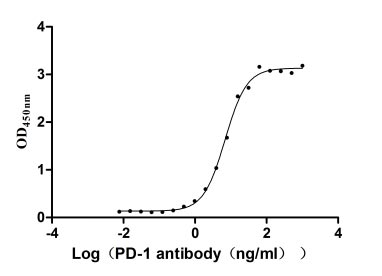
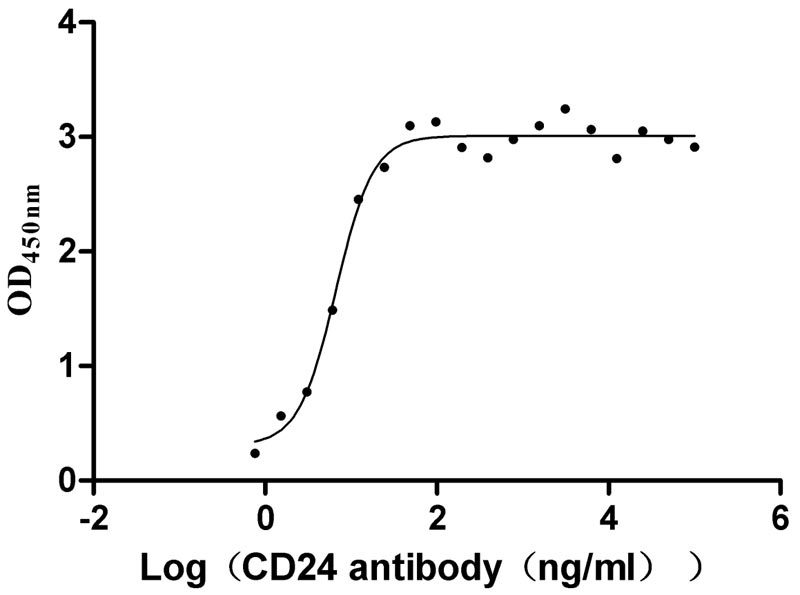
-AC1.jpg)
